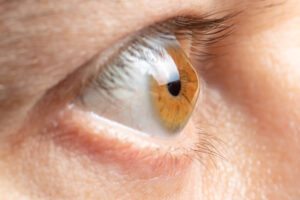
The clear front part of your eye is called the cornea. A healthy cornea is dome shaped. It protects your eye and helps to focus light. Keratoconus occurs when the cornea thins and bulges into a cone shape.
This shape causes light to incorrectly enter the eye which can result in blurred and distorted vision. Keratoconus is often misunderstood, here are 5 common misconceptions about the eye disease.
1. Keratoconus Causes Blindness
A common misconception is that keratoconus causes blindness. That is simply not true. Keratoconus is a progressive disease that can impact vision, but it cannot cause complete blindness. Its symptoms include the following:
- Blurred vision
- Difficulty seeing at night
- Light sensitivity
- Headaches
- Frequent prescription changes
- Inability to wear contact lenses
2. Keratoconus Cause is Always Known
A frequent misconception is claiming to know the cause of keratoconus. The actual cause of keratoconus is unknown. There are many factors that may lead to keratoconus, including the following:
- Weakening of the collagen in the eye
- Genetics
- Overexposure to UV rays
- Excessive eye rubbing
- Complications following laser eye surgery
3. Only Teenagers Get Keratoconus
It is common for keratoconus to be diagnosed in young people in their teens and early 20s, especially during puberty. However, keratoconus is a progressive disease and may not peak until an individual is in their late 30s/early 40s.
4. Keratoconus Is Preventable
Keratoconus for the most part is not preventable. However, it can be managed, and its progression may be slowed. The key to management is early diagnosis and regular monitoring through comprehensive eye exams. Mack Eye Center offers comprehensive eye exams that can identify and effectively diagnose keratoconus.
5. There Is No Treatment for Keratoconus
Keratoconus is a very treatable condition. Treatment will depend on the disease’s progression. Early-stage keratoconus can be treated with prescription glasses or contact lenses.
As the disease progresses, the shape of the cornea will make wearing contacts difficult or impossible. Advanced keratoconus may be treated with either collagen cross-linking or corneal implants.
How to Treat Keratoconus
Mack Eye Center offers INTACS which are cornea implants that have been FDA-approved for the treatment of keratoconus. INTACS are also commonly combined with collagen cross-linking.
Collagen cross-linking is an in-office procedure that strengthens the collagen within the cornea. This results in a flatter cornea. While it is not a cure for keratoconus, it may slow or delay the disease progression.
Schedule Your Keratoconus Consultation Today
With proper treatment, keratoconus can be slowed or stopped. If you have been diagnosed with keratoconus, contact Mack Eye Center today to discuss your keratoconus treatment options.

